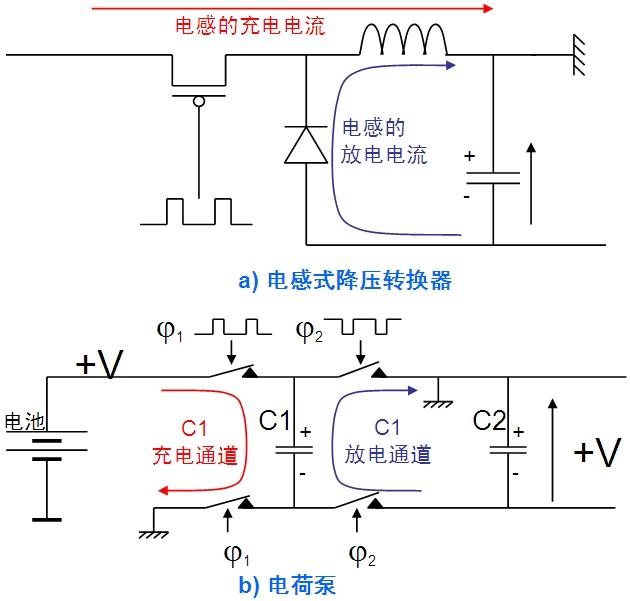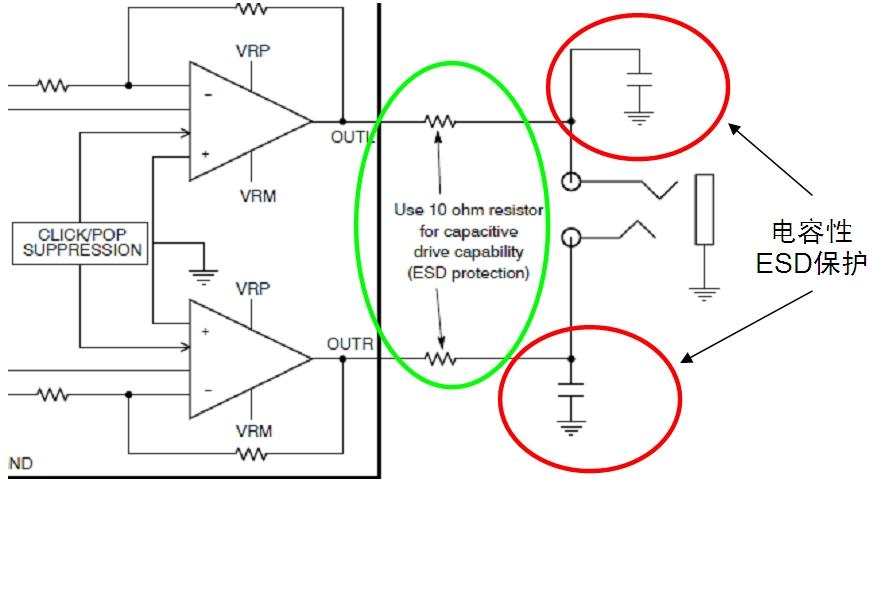In order to meet consumers' higher requirements for headphone audio quality, portable consumer devices such as mobile phones, GPS and MP3 players require high quality stereo headphone amplifiers. When designing the output stage of a stereo headphone amplifier, designers need to choose a more suitable solution from the different options of bridge load, capacitive coupling, virtual ground and true ground.
This article refers to the address: http://
These different output segment design options have their own advantages and disadvantages, such as the dynamic range of the bridge load, support single-supply operation, but not compatible with stereo headphones; capacitive coupling compatible with stereo headphones, while supporting single-supply operation, but there is a need for large capacitors And high-pass filtering and other issues; virtual ground also supports a single power supply, no coupling capacitors, but if there is a microphone, it is not compatible with stereo headphones.
Figure 1: Circuit diagram of the output sections of different stereo audio amplifiers.

In comparison, the true ground output design reflects more application advantages, such as supporting stereo headphones, eliminating the need for large decoupling capacitors, saving board space and avoiding the costly cost of large capacitors, improving low frequency response performance, and improving Power Supply Rejection Ratio (PSSR). In addition, all signals, including audio and DC offset, have the same reference level, minimize crosstalk, and support standard accessories with 4 points jack. In particular, amplifiers with this design are more susceptible to electrostatic discharge (ESD) / electromagnetic interference (EMI) protection. Of course, the use of true grounding also pays for the footprint, which is 50% larger than a conventional stereo amplifier. But on the whole, the true grounded stereo headphone amplifier provides customers with more application advantages and becomes a natural choice for customers.
Challenges and solutions for the “true ground†output section design However, it is not easy for designers to design the true grounding of the output of the stereo headphone audio amplifier. Because other designs, such as virtual grounding, support single-supply operation, in a true-ground design, the amplifier needs to operate with dual supplies, which requires both a positive supply voltage and a negative supply voltage, and the generation of a negative supply voltage is not an easy task.
Two options can be considered to generate a negative voltage. One is to use an inductive buck converter, and the other is to use a charge pump. Inductive buck converters use inductors as a medium for energy storage and energy transfer (see Figure 2a). In this scheme, when the MOSFET is turned on, the inductor is charged, and the charging current direction is as shown by the red line. At this time, the Schottky diode is turned off; when the MOSFET is turned off, the Schottky diode is turned on, the inductor is discharged, and the discharge current is in the blue direction. The line is shown while charging the capacitor. Since the positive electrode of the capacitor is grounded, the voltage applied to the capacitor is a negative voltage, that is, the output is a negative voltage. This method of generating a negative voltage is extremely efficient and can provide a large current, but the problem is that the inductance used is as large as the size of the capacitor removed in the output section, and the price is as expensive as that, which does not reflect the reduction of board occupation. Space and cost reduction advantages.
Charge pump converters are commonly used in reverse-voltage DC-DC conversion, where a positive voltage is input and a negative voltage is output. Capacitance is used in the circuit as a medium for energy storage and energy transfer. This solution contains 4 switches and 2 capacitors (C1 and C2), see Figure 2b. As shown in the figure, when the two switches on the left side of C1 are turned on, the two switches on the right side are turned off, C1 is charged (see red line); at the next timing, the two switches on the left side of C1 are turned off, and the two on the right side. The switches are turned on, C1 is discharged, and capacitor C2 is charged. Since the positive pole of C2 is grounded, the voltage charged on C2 is a negative voltage, that is, a negative voltage is output. Nowadays, the switching frequency of the charge pump circuit in portable electronic products is getting higher and higher, so it is not necessary to use a large capacitor which is large in size and expensive. This is a major advantage of the charge pump solution. Other advantages include the extremely high efficiency of generating a negative voltage, which makes it attractive for generating negative voltages. However, in practical applications, there are some issues to be aware of, such as the use of isolation transistors to prevent junction diodes from conducting; and other functions to properly bias the isolation transistors to ensure that the junction diodes are reverse biased.
From a power architecture perspective, the “true grounded†stereo headphone audio amplifier uses a “regulator (eg charge pump converter) + amplifier†architecture (see Figure 3). This architecture has a power supply rejection ratio (PSSR) ratio audio amplifier. Directly connected to the system between the battery positive voltage (Vbat) and the battery negative voltage (-Vbat). For portable consumer products, the audio amplifier must have a high PSSR to avoid interference from power and wiring noise.
Figure 2: Circuit diagram of two negative voltage generation schemes.

NCP2811 A/B Capacitor-Free Real-Earth Stereo Headphone Amplifier Features and Benefits ON Semiconductor, the world's leading supplier of high-performance, energy-efficient silicon solutions, offers a range of noise-free audio amplifiers for portable consumer applications, such as for speakers. NCP2991/0, NCP2892, NCP2890/NCV2890, NCP4894, NCP2820/20A/30, and NCP2809 and NCP2811 for stereo headphones. Among them, the NCP2809 uses a virtual ground design, while the NCP2811 is a no-capacitor (NoCapTM) true grounded stereo headphone amplifier. The device uses a “charge pump + amplifier†power supply architecture with a true ground design. The built-in charge pump architecture provides both positive supply voltage (VRP) and negative supply voltage (VRM), allowing the amplifier output section to save two external compartments. DC blocking large capacitors and the ability to use a 4-point connector allows the microphone and headphones to use the same ground pin for efficient use of pin resources.
Figure 3: Functional block diagram of the NCP2811A (externally adjustable gain) capless stereo headphone transformer.

The NCP2811 provides 100 mW of power to a 16 Ω headphone load with a 5 Ω supply voltage, with a background noise of only 7 μVrms AW and total harmonic distortion (THD) + noise (N) of less than 0.01%. In addition, the NCP2811 has pop-up (Pop) and click (noise) noise cancellation circuitry, so that consumers will not hear disturbing noise; high PSSR of -100 dB, further improve the noise suppression level; 105 dB signal-to-noise ratio ( SNR) is to improve the sound quality and enhance the quality of the consumer audio experience. The device also rejects EMI and consumes very low current in shutdown mode, helping to extend battery life.
The NCP2811 is available in a space-saving CSP 12-lead package measuring only 1.5 x 2 mm with a 0.5 mm pitch. It is also available in a QFN 3 x 3 mm package. The NCP2811 is available in two versions: the NCP2811A is an externally adjustable gain version, and the NCP2811B is an internal fixed gain version.
When the NCP2811 external component selection designer applies the NCP2811 true grounded stereo headphone transformer, it also involves the problem of external component selection. For the NCP2811A with externally adjustable gain, the gain needs to be set; and its closed-loop gain is determined by the resistors Rf and Rin. It is recommended that the closed-loop gain be set in the range of 1 to 10.
In terms of capacitance selection at the input, the input resistor Rin + input capacitor Cin blocks the high-pass filter from low frequencies, and Cin should be chosen such that the Cin – Rin low-pass filter cutoff frequency (fc) is below 20 Hz.
In terms of charge pump capacitance, ceramic capacitors with low equivalent series resistance (ESR) should be selected (recommended X7R or X5R); in addition, during negative voltage generation, the flying capacitor (Cfly) acts as an energy transfer, and Cpvm (see Figure 3) has a capacitance equal to at least Cfly, maximizing energy transfer. The minimum Cfly and Cpvm values ​​are 1 μF (0402 package size), with T100's C1005X5R0J105K and Murata's GRM155R60J105K19. For decoupling capacitors, it is also recommended to select low-ESR ceramic capacitors of the X7R or X5R specifications, and it is recommended to select a minimum of 1 μF capacitor value.
As mentioned earlier, a true grounded design such as the NCP2811 is easy to implement ESD protection. For the NCP2811, it is basically a high-performance op amp, and the op amp becomes unstable when driving capacitive loads. Therefore, if capacitive ESD protection is required in the design, it is recommended to add two 10 Ω resistors in series between the NCP2811 output and the ESD protection circuit to minimize capacitive loading effects.
Figure 4: When capacitive ESD protection is required in the design, a series resistor between the NCP2811 output and ESD protection is recommended.

to sum up:
Portable consumer devices require high-quality stereo headphone amplifiers to meet consumer demand for a better audio experience. The output section of the stereo headphone amplifier is designed with different options such as bridge load, capacitive coupling, virtual grounding and true grounding. The true grounding provides a number of application advantages and is a natural choice for the customer. However, in a true grounded design, the amplifier needs to operate with dual supplies, and the negative voltage generation becomes a problem. Advantageously, ON Semiconductor introduced the NCP2811 NoCapTM true grounded stereo headphone amplifier with a “charge pump + amplifier†power supply architecture that simultaneously generates positive and negative voltages to help save two outputs. Straight and large capacitors, free up more board space. The device also offers low noise and high signal-to-noise ratio and high power supply rejection ratio, excellent noise rejection, and a small CSP-12 package, ideal for space-constrained consumer applications such as cell phones, MP3 players and GPS. Class design.
Zhejiang Casnovo Materials Co., Ltd. , https://www.casnovonewenergy.com